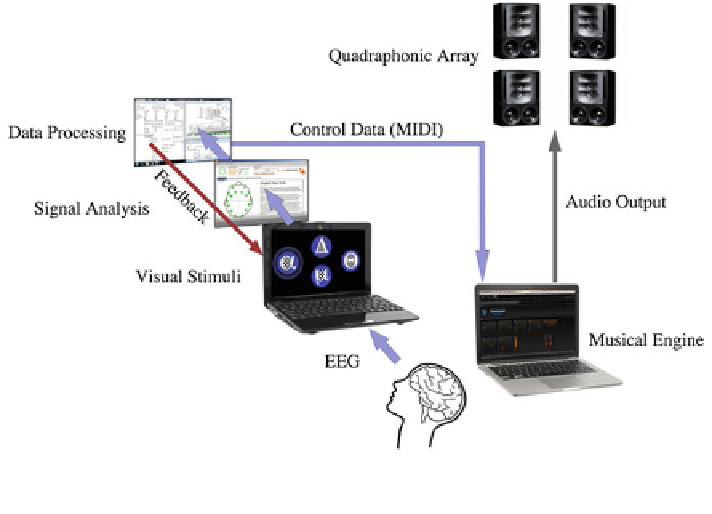Information Technology Reference
In-Depth Information
Fig. 10.8
The system components for
Flex
built using consumer grade EEG hardware, two laptop
computers and open-source software
motionless concentration, and the use of visual stimuli requires staring at a com-
puter screen, both of which offer a rather disengaging spectacle for viewing how-
ever sophisticated the underlying processes are. We are fortunate to now be at a
stage where the technology is no longer the only focus of attention, yet we need to
be mindful of how we communicate the practices of BCMI to an audience and the
aesthetic effects of the tools we choose. This has led recent work to move away
from brainwave control over electronic sounds towards integrating brainwave
control and external musical bodies, including acoustic instruments and musicians.
In 2013, Eaton and Miranda reported on
Mind Trio
, a proof-of-concept BCMI
that allowed a user to control a musical score in real time, choosing from short pre-
composed musical phrases (Eaton and Miranda
2013b
). SSVEP provides choice
over fours phrases during a window of time. These windows are synchronised with
a metronome and dynamic score presented to a musician via a computer monitor.
Within each window, the user selects the phrase that is displayed at the next sync
time. The musician is presented with the current phrase and is shown the next
phrase shortly before it becomes active. This extension of brainwave control
designed to accommodate the involvement of a third party is the basis of
Activating
Memory
, an experimental composition for a string quartet and a BCMI quartet. It
uses the same principle as
Mind Trio
for users to choose phrases of music that a
corresponding musician then performs. All four systems are synchronised via a
master clock across two movements.
Activating Memory
'
s debut performance was
at the 2014 Peninsula Arts Contemporary Music Festival, Plymouth, UK.

